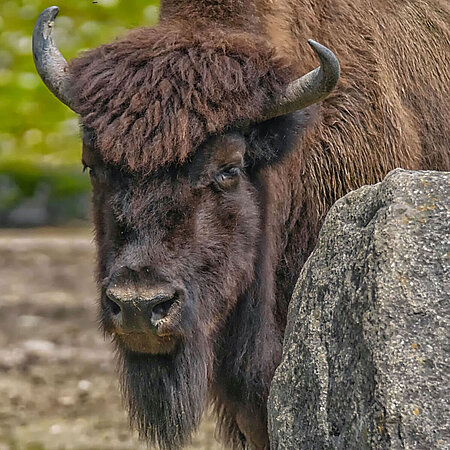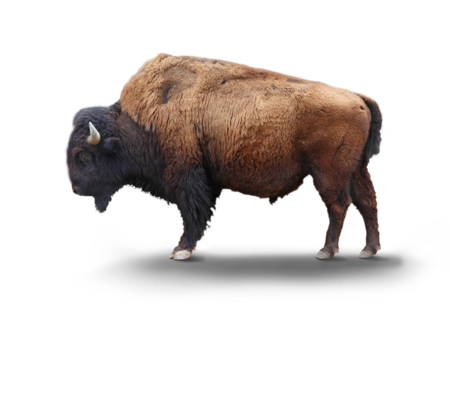Wood Bison
Bison bison athabascae

- FamilyBovids (Bovidae)
- Weight♀ 600 kg, ♂ 1.000 kg
- HabitatForests, bushlands, grasslands
Robust herd animal
Newborn calves are able to run and kick within hours of birth, and join the herd on the same day. Adults and their young have a thick wintercoat that keeps them warm in temperatures as low as – 40° C. Despite their enormous size, wood bison can run at speeds of up to 50 km/h.

American immigrant
The wood bison is the largest terrestrial mammal in North America. It is the descendant of migrants who wandered across the ancient Bering land bridge from North Asia to the Americas towards the end of the last ice age. Since then, the ruminant has lived in the northwestern forests of Canada, where it feeds primarily on grasses, herbs, shoots and lichens.
The wood bison was on the verge of extinction due to hunting and habitat loss. The population has since recovered thanks to the establishment of nature reserves.
Distribution
